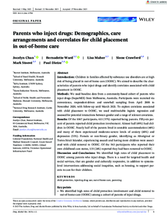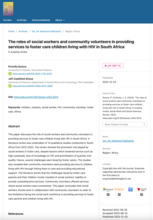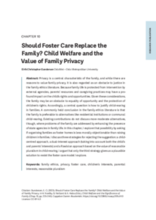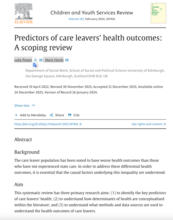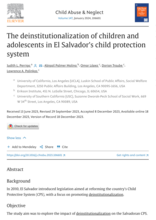Demographic Data
|
Sources: World Bank, UNICEF, UNDP HDR 2015, DHS 2013 |
Displaying 611 - 620 of 14551
Children in families affected by substance use disorders are at high risk of being placed in out-of-home care (OOHC). The authors of this Australia-based study aimed to describe the characteristics of parents who inject drugs and identify correlates associated with child placement in OOHC.
This article aims to build knowledge, from a life-course perspective, of foster carers’ views of the transition from care to adulthood for young people with mental health problems by interviewing carers from foster homes in Norway and Sweden.
This paper discusses the role of social workers and community volunteers in providing services to foster care children living with HIV in South Africa.
In this chapter in the book "Child Welfare and the Value of Family Privacy", the author discusses moderate alternatives to address problems of the family by enhancing the presence of state agencies in family life. The author asks if organising families as foster homes is less morally objectionable than raising children in families by examining the child welfare system in Norway.
This systematic review contained studies that were mostly based in the U.S. and had three primary research aims: (1) to identify the key predictors of care leavers’ health; (2) to understand how determinants of health are conceptualised within the literature; and (3) to understand what methods and data sources are used to understand the health outcomes of care leavers.
To investigate and discuss the mental health status of left-behind children in Anhui Province before and after the COVID-19 pandemic and analyze its influencing factors.
Children should grow up in familial settings as life in an institution could hamper their development and well-being, experts say.
Across the region, the rising temperatures, extreme weather events, and shifting climate patterns have led to a surge in displacement amongst vulnerable communities, the UN Children’s Fund said. “This mass displacement has disrupted children’s learning, and exposed children to heightened risks of exploitation such as forced child marriage, child labor, and recruitment into armed groups,” the agency said.
The purpose of this study was to explore the impact of deinstitutionalization on the Salvadoran Child Protection System.
The objective of this paper is to further the understanding of young people’s experiences of out-of-home care (OHC) in Sweden.

